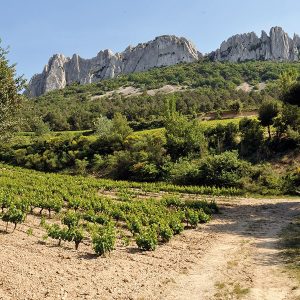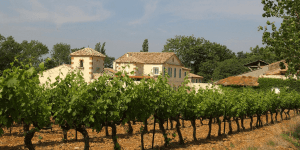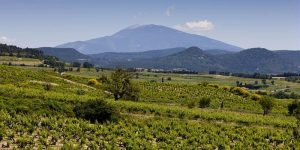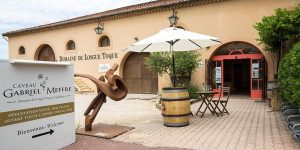The life of the vine through the seasons
The vine growth cycle
When the first frosts arrive, generally in November, the vine loses its leaves. This is when it enters a state known as ‘dormancy’, which lasts until March.
Following these months of rest, the vine awakens and the first buds begin to appear. Between March and April, the buds burst, a process which is known as ‘bud break’. Each bud will give birth to a new shoot.
In order to monitor the progress of vines, we identify various stages: from the spreading of the leaves to the birth of the flower buds, followed by the individualisation of the flowers and, finally, the shedding of the calyptra (a kind of cap).
Nicolas Spéranza, manager of the estates, explains:
“This stage is the beginning of a period during which weather is very important. In order for the calyptra to shed, dry and windy weather is needed. If the weather is wet, a process known as ‘coulure’ occurs, which causes the flowers to fall off. A flower that falls is one less grape harvested. It is therefore a very sensitive period, as even a small storm can have a significant effect on the harvest.”
Once the calyptras have fallen off, the wind pollinates the vine, causing it to flower. At the centre of the flower, the ovary grows and becomes a berry (beginning of June) The vine is still very sensitive to disease at this stage.
The green grape begins to change colour. At this point, it is the end of July and the vine enters the ripening stage. With white grape varieties, the green grapes become transparent and gradually mature, while with red varieties, the grapes change from green to red right up until the harvest.
Getting busy in the vines!
Pruning
From mid-November to mid-March, we get down to the job of pruning the vines. All of our estates are manually pruned no mechanical pruning takes place. This represents the main part of the year’s manual labour and our permanent team is joined by seasonal workers. The aim is to finish pruning before the vine begins to grow again.
Nicolas adds:
“Pruning requires deep knowledge of vines. Anybody can rapidly learn how to train vines, debud or harvest by hand. Pruning, however, is far more complicated. You need three or four years of training to become a good pruner. While mechanised pruning is fairly common on IGP vineyards, at Gabriel Meffre, whether it’s AOP or IGP, we insist that all of our vines are pruned by hand.”
Preparing the soil
“In Mediterranean climates, this depends greatly on the level of rainfall. If it is rainy and hot, weeds grow very fast!”
At Château Grand Escalion, as part of our HVE3 certification, we reduce the size of weeded areas in order to promote biodiversity. Only 40 cm beneath the feet of the vines are weeded and, this year, the job was carried out by goats!
At Domaine de Longue Toque, which is transitioning to organic farming practices, we use mechanical inter-vine cultivators.
From ripening to harvests
In mid-July, the period of risk when diseases can devastate the vines is over. The ripening of the grapes, until around the 20th of August, is the only period of the year when we no longer work in the vines. This is followed by the eagerly awaited harvests… And then the cycle begins all over again!
Work on the vineyard, with all the necessary stages and unexpected events it brings, directly connects people with nature. The care and attention we put into the soil allows us to produce wines that we can be proud of.
Rubrics
Découvrez plus d'articles...

The vineyard and wine cellar in winter
What happens in the world of wine during the winter period? After the hustle and bustle of autumn, the harvests and vinification process, comes winter, a season devoted to maturation and looking after the vines.

In 2018, we will continue to strive to be a Responsible Company!
In this new year, our wish to help build a world that respects both mankind and the environment is as strong as ever. This can be seen through the number of our projects for 2018 that are closely related to our convictions as a Responsible Winery. We’re delighted to be given the opportunity to tell you about them!

Discovering the art of pairing wine and chocolate
A morsel of white chocolate, Black Forest gâteau, pieces of stem ginger wrapped in chocolate, or Mexican chicken in chocolate sauce—all very appetising, but which wine would you serve with each one? Food and wine pairings factor in a combination of elements, such as the terroir, our powers of concentration, the circumstances of the tasting session, our sense memory and more. We guide you through some of the basic principles of this fascinating world!







